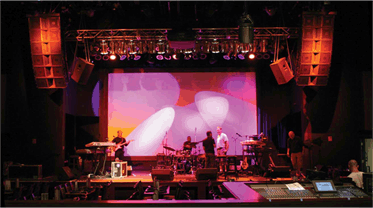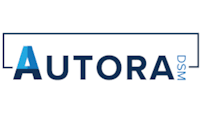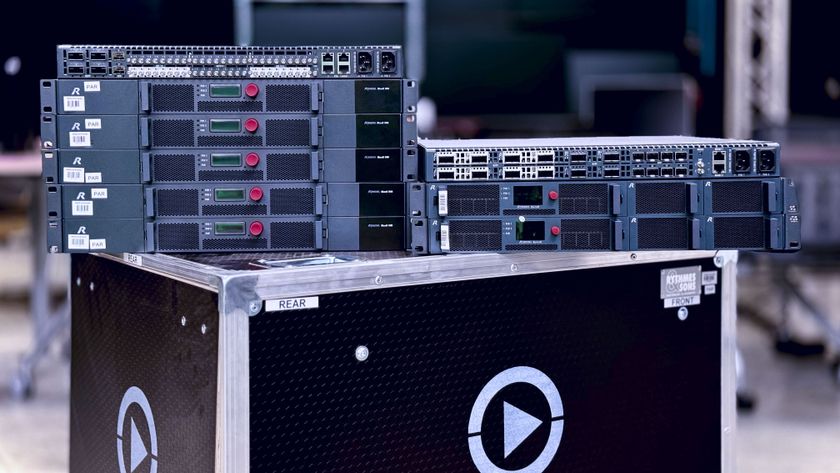Showcase Live At Patriot Place Is Outfitted With A Rider-Friendly Setup
FOXBOROUGH, MA—Amit Peleg, president of the design, consultation, and installation company Peltrix in Purdys, NY, has everything going for him in terms of ability, reputation, and experience. Time was decidedly not on his side, though, for a recently completed project at Showcase Live, the club at Patriot Place in Foxborough, MA.
The Peltrix design for Showcase Live features a JBL VerTec powered loudspeaker system with two main arrays.
The 16,000-square-foot club, in a retail/entertainment complex next to the NFL’s New England Patriots Gillette Stadium, provides live music, comedy, corporate events, game day events, and other special programming in a concept developed by National Amusements as the first of its kind.
“National Amusements came to me after another design already was in place and asked me to review it,” said Peleg. “The client’s designed system was insufficient in some areas and unnecessarily over-complicated in others. The live music genres for the club include everything from jazz to hip-hop to rock, and the space has to be customized for conferences. We had to start from scratch, with two weeks from concept design to finished drawings, and we were not even allowed into the club for installation until ten days before opening. This was a major achievement for us; the audio and video is complex.”
The Peltrix design features a JBL VerTec powered loudspeaker system with two main arrays consisting of six VT4888DP-AN midsize line array elements, equipped with JBL DrivePack technology and HiQnet-compatible input modules, and four VT4887DP-AN small-size line array elements on each side for side fills. Two VP7212/64DP-AN powered 12- inch speakers are used for center fill, with VP7215/95DP-AN powered 15- inch speakers for back room fills. Speaker processing runs on dbx DriveRack 4800s. There are four additional zones around the club controlled by a dbx Zone Pro 1260. Monitors, powered by Crown amplifiers, include a dozen JBL VRX915M wedges, a thirteenth wedge as reference for the monitor engineer, two SRX725 side fill speakers, and a combination VPSB7118DP-AN and VP7215/64DP-AN as a drum mix. Main floor subs feature four JBL ASB6128V V-loaded dual 18-inch systems and four JBL ASB6128 frontloaded dual 18-inch systems.
“I chose to mix the two types of subs because while the rear-loaded ASB6128V sounds a bit ‘smudged’ I like its punch,” Peleg said. “The front-loaded ASB6128s are not as powerful but I love their concise clean sound. Mixed together, they complement each other for a great sound.”
FOH and monitor consoles are Yamaha PM5D-RHs, which are very popular he said. “This system, speakers, and consoles, are widely acceptable by most riders. I wouldn’t use the system if it was just fashionable. It works. Most bands and guest engineers like it, and most importantly, you don’t see it mentioned in riders as unacceptable like some other types of equipment. The last thing I need is for the booking agent to tell me that they can’t book a specific artist because the artist wouldn’t play on what we installed or that it’s insufficient.”
It’s also a matter of talking with engineers, Peleg said. “Many come to the club with their own presets. They put in their card and are good to go. Often those are guys who travel with the same consoles, which in this case they can leave in the truck. And Yamaha service is superb. We had a problem with one of the consoles and seven hours after calling tech support someone from Yamaha flew in, replaced a master module and left, no questions asked.”
For the club’s video system, Peleg chose three HDYV Da-Lite screens, left/right HDTV 78x139 screens and a 146x260 center stage screen. Side projectors are Sanyo PLC-XP100L with a center PLC-XF46N unit. Eight LG 42-inch LCD HDTV monitors are installed, six on the back wall of the bar.
“We used a 24x24 Extron matrix switcher controlled with keypads to make it idiot-proof,” he said. “The client did not plan to hire a dedicated video staff, and we certainly did not want to go back there every other day to fix mess-ups. We used two keypads in the sound booth, one for matrix and preset control, and one for an infrared control for changing cable/satellite channels and turning projectors on/off. There is one satellite input and two for cable; you cannot get all sports packages with one format, and it was required that we replicate the New England Patriots stadium programming.
“Camera and DVD inputs and five different VGA inputs are all around the room and stage,” Peleg added. “A computer can make manipulations but only remotely. We tried to be as flexible as possible for any kind of additional cameras or computers they can plug in anywhere, both for audio and video. All the wiring we used is LINK, from Italy, custom-made.”
The audio system was intended to be as rider-friendly as possible for the performers so that as few changes as possible would be needed, he said. “I based this on my own personal knowledge of riders from acts I have mixed or have hosted in other venues. That’s one of the reasons why I like to do entire projects from the design and consultation phase through the installation and even beyond opening, helping the house production staff get the place going.”
The biggest challenge, apart from the time squeeze, Peleg said, came from camera shakes. “Each time the kick drum hit, the camera shook. We tried various shock absorbers for three weeks until we isolated the problematic resonance frequency. We could, of course, use a gyroscope to solve the problem, but this is a very expensive proposition that was out of the question. To find the resonating frequency, we used an idea of my father’s— he’s a retired agricultural engineer. He used to measure fruit firmness by placing two accelerometers on each side of a fruit and playing a patented signal through the fruit. In his application, the difference in vibration between the accelerometers gave him the fruit firmness. We used the same principle. We placed two accelerometers, one on the roof, and one on the camera, and we used the kick drum to excite the system. The result on an oscilloscope gave us what we needed to calculate a combination of different shock absorbers that took care of the problem.”













